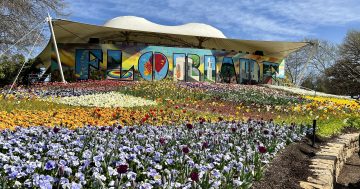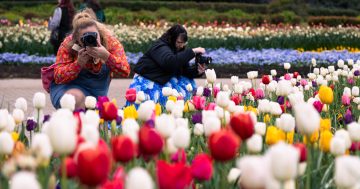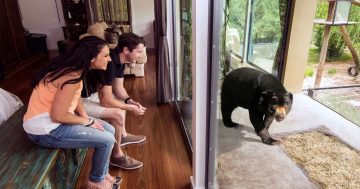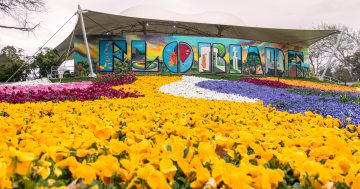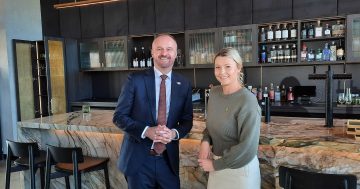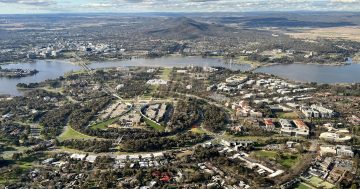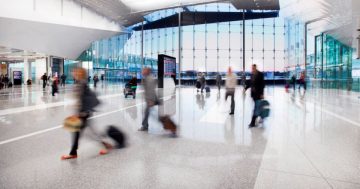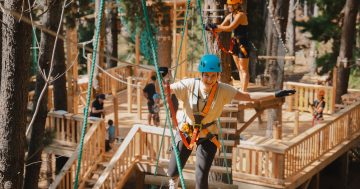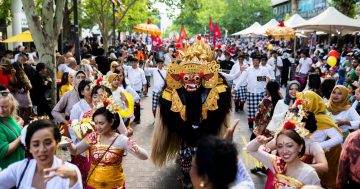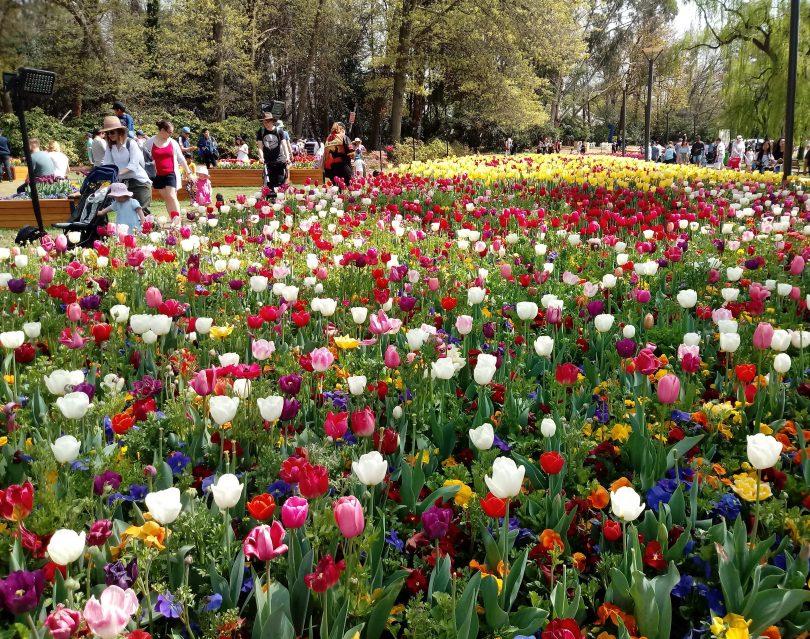
Tourism leaders say Floriade is great but it suffers from a bit of “sameness”. Photo: File.
The Territory’s tourism sector – now well into its post-pandemic recovery, has welcomed a multi-million dollar boost as part of this year’s Budget as it plans for an even bigger and brighter future.
The sector was decimated by the pandemic, with expenditure from overnight visitation halving in the financial year ending September 2021.
Pre-COVID-19, overnight visitors brought in a record $2.5 billion to the local economy.
In an attempt to support a return to numbers that high, the ACT Government will fund $600,000 worth of targeted domestic and international destination marketing and plunge $1 million to further support tourism businesses and jobs through the Tourism Cooperative Marketing Fund and Tourism Product Development Fund grant programs.
An additional $1 million over four years will also be invested into Floriade and the Enlighten Festival, while a further $500,000 will be invested in the Major Event Fund this financial year.
In total, the government has committed just over $3 million dollars to the sector, an investment the Canberra Region Tourism Leaders Forum say isn’t insignificant given the Territory Government’s tight budgetary constraints.

Events like Enlighten are among the big ticket festivals drawing interstate visitors to the capital. Photo: Buda.
Forum chair Dr David Marshall said while the industry could always do with more, particularly in the current context of a competitive domestic market, he welcomed the commitment to major events in particular.
“There are all these really good events in Canberra which are a solid base for tourism – Summernats, the Multicultural Festival, the Folk Festival, the Design Festival and a whole lot of second-tier sporting events like the Kanga Cup – they could all do with some additional funding,” he said.
“It’s about investing in and growing the events we already have here, rather than trying to bring a brand new event here. That’s the smart strategy anyway.”
Floriade, which last year injected between $45 and $47 million into the Territory’s economy, is one Dr Marshall said could do with some more love.
“We’ve always said a greater investment [in that] is needed … it needs a major review because it’s been very much the same for the last 30 years,” he said.
“We need to ask how we can grow the event because it has a sameness about it which visitors and tour companies often provide feedback about.”
Since the 90s, the Forum has called for a permanent site which could include gardens, waterfalls and other displays which could be there 12 months of the year, as well as a continual expansion of the event across the city every year.
Dr Marshall said an example Canberra could follow could be Ottawa’s Tulip Festival which takes place across 16 locations in the city.
“There are options [for expansion] but all of them will require substantial capital investment so I suppose the government would need to weigh that up,” he said.
“But none of that detracts from the fact Floriade has been an enormous success.”
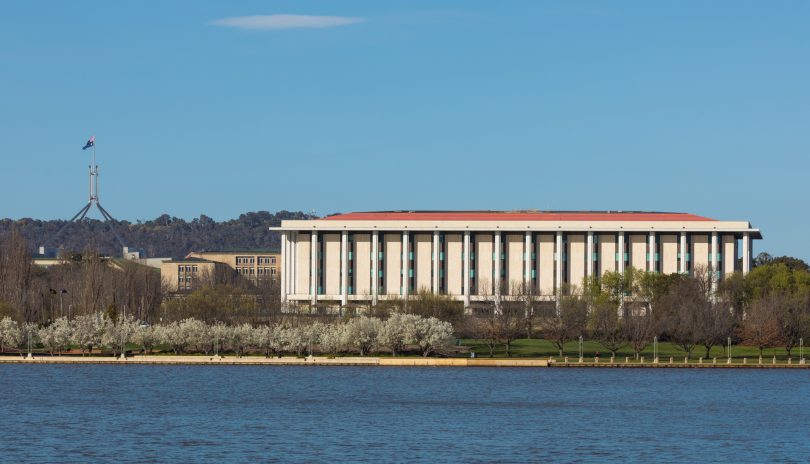
The Territory’s national institutions attract repeat visitors because they constantly change their offerings, Dr Marshall said. Photo: Michelle Kroll.
It’s not only major events which draw visitors in, of course. Dr Marshall said Canberra had the largest percentage (between 30 and 40 per cent) of visitors coming to see family and friends of any city in Australia.
“Now, no matter what time of the year, those people bring their family and friends to the national attractions because they are running blockbusters and major events,” he said.
“So, they continually draw visitors, from the regions in particular.”
The expansion of domestic and international flights in and out of Canberra, as was recently announced, is also expected to help increase the size of Canberra’s tourism market.
According to Dr Marshall, more announcements on flights are expected in the coming months.
“There’s a great interest in the National Capital. We’ve got a million people on our doorstep who would be using the airport as well as the government has been very proactive in encouraging carriers to look at Canberra – and that’s paying dividends,” he said.












